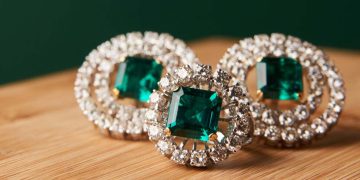The world of rare stamps, known as philately, has long been a passion for collectors and investors alike. Over the decades, the value of rare stamps has fluctuated, influenced by factors like market demand, historical significance, condition, and scarcity. In recent years, however, there has been growing interest in rare stamps as an alternative investment. With the rise of online marketplaces and the increasing wealth of global collectors, many are now asking, “Is now the time to invest in rare stamps?” This article will explore current market trends, offer a guide to buying and authenticating stamps, and discuss the investment potential of philately.
Analyzing Market Trends for Rare Stamps
The market for rare stamps has seen a significant shift over the past few years, especially with the increasing interest in alternative assets. While philately has always been a niche market, it is gaining more attention from investors looking to diversify their portfolios. Let’s break down some of the key market trends driving this renewed interest.
- The Growth of Online Auctions and Marketplaces
One of the primary catalysts behind the recent surge in the stamp market is the rise of online auction platforms and marketplaces. Websites like eBay, StampAuctionNetwork, and even specialist platforms like Cherrystone Auctions have made it easier for collectors and investors to access rare stamps from anywhere in the world. This increased accessibility has expanded the buyer base, making it easier for stamps to achieve their highest potential value.
Moreover, online auctions have enabled a greater level of transparency in pricing. With the ability to track past sales and see the performance of specific stamps, buyers can make more informed decisions. As a result, even collectors from regions with less access to physical auction houses can now participate in global markets.
- Growing Interest from International Investors
While traditional philately collectors remain a core part of the market, new investors from around the world are turning their attention to rare stamps. This is particularly evident in regions like Asia, where wealthy collectors are eager to acquire rare stamps as a way of diversifying their investments. Countries like China and India have witnessed a surge in demand for stamps, with new collectors entering the market and driving prices higher.
In addition, the global wealth of the ultra-rich continues to grow. As more high-net-worth individuals (HNWIs) look for alternative investments, rare stamps have gained recognition as a stable and potentially lucrative asset class. In some cases, rare stamps are seen as a hedge against inflation and economic uncertainty, much like precious metals or fine art.
- Price Appreciation of Key Stamp Issues
Over the years, certain rare stamps have experienced substantial price appreciation. The “Penny Black” from the United Kingdom, one of the world’s first postage stamps, has increased in value by over 500% in the last decade. Similarly, the “Inverted Jenny” from the United States, which is one of the most famous misprints in philately, has seen its value soar as more collectors and investors seek out these iconic pieces of history.
Rare stamps featuring significant historical events or misprints tend to fetch the highest prices. The scarcity of these stamps, coupled with their cultural and historical significance, makes them highly sought after. Investors focusing on these iconic issues can often see impressive returns over time.
- Philately’s Role as a Long-Term Investment
While rare stamps are not a get-rich-quick investment, their value tends to appreciate steadily over the long term. Unlike stocks or real estate, which can be subject to volatility, rare stamps are relatively stable assets. This makes philately an attractive option for investors looking for long-term wealth preservation.
Furthermore, stamps are portable, tangible assets, meaning they are not tied to any one location or currency. They can be easily stored and traded internationally, making them a global asset class. In an uncertain economic climate, rare stamps can offer both a store of value and a potential for growth.
A Guide to Buying and Authenticating Stamps
Investing in rare stamps can be highly rewarding, but it requires a keen understanding of what makes a stamp valuable. Whether you’re a novice collector or an experienced investor, here’s a guide to buying and authenticating stamps.
- Research and Education
Before investing in rare stamps, it’s essential to educate yourself about the various categories of stamps, their history, and the factors that influence their value. There are many resources available online, including philatelic societies, auction websites, and books on stamp collecting. Familiarizing yourself with key stamp issues, printing techniques, and common misconceptions will allow you to make better-informed purchasing decisions.
Additionally, attending stamp shows and exhibitions is a great way to meet other collectors and learn from experts in the field. These events often feature rare and valuable stamps that can give you a sense of what’s in demand and what types of stamps are seeing increased interest.
- The Importance of Condition
The condition of a stamp is one of the most important factors in determining its value. A stamp that is in pristine condition will generally fetch a much higher price than one that is damaged or worn. When buying stamps, you should always look for those that have clear, well-defined perforations, sharp corners, and no creases or tears. Stamps with good centering, bright colors, and no gum problems are also more valuable.
A stamp’s grade is typically determined using a system established by the philatelic community. Stamps are graded based on their centering, color, gum condition, and overall appearance. A stamp that has been graded 90 or above by an expert philatelic organization is generally considered to be of exceptional quality.

- Authentication and Provenance
Authenticating rare stamps is crucial for ensuring that you’re investing in a legitimate and valuable asset. Many rare stamps have been forged over the years, so it’s essential to verify a stamp’s authenticity before making a purchase. One way to do this is by purchasing stamps that have been certified by recognized philatelic organizations, such as the Philatelic Foundation or the Professional Stamp Experts (PSE).
Certification involves the examination of the stamp’s printing characteristics, paper, ink, and other physical attributes. A stamp with a certificate of authenticity offers peace of mind and ensures that the piece is genuine. For high-value stamps, it’s advisable to obtain a certificate from a respected organization to verify the stamp’s authenticity and increase its resale value.
- Buying Through Reputable Dealers and Auction Houses
When purchasing rare stamps, it’s important to buy from reputable dealers or auction houses. Established dealers have a track record of selling authentic stamps and can provide valuable insights into the current market. Similarly, well-known auction houses like Sotheby’s and Christie’s offer a curated selection of rare stamps, often with detailed provenance and expert authentication.
Be cautious of deals that seem too good to be true, as there are always risks associated with purchasing from unverified sources. Scams and fraudulent stamps are not uncommon in the world of philately, so it’s essential to conduct thorough due diligence before making any purchase.
The Investment Potential of Philately
Philately has long been considered a niche investment, but its appeal is growing as investors look for alternatives to traditional asset classes like stocks, bonds, and real estate. Here are some reasons why rare stamps can be a strong investment opportunity:
- Stable Long-Term Growth
While the value of rare stamps can fluctuate in the short term, over the long term, many stamps have seen consistent price appreciation. The global nature of stamp collecting and the fact that stamps are physical assets with limited supply mean that they are less susceptible to the volatility seen in other markets. Over time, stamps with historical significance or rarity tend to hold or increase their value.
- Diversification of Investment Portfolio
Stamps are an excellent way to diversify your investment portfolio. As alternative assets, they are often uncorrelated with traditional financial markets, meaning they can perform well even when other investments are struggling. For example, during periods of stock market downturns or economic crises, rare stamps have often performed better than equities.
- Increased Global Demand
As the global wealth of high-net-worth individuals continues to grow, the demand for rare stamps is increasing. New markets, particularly in Asia, are showing strong interest in stamp collecting, driving up the prices of rare and valuable stamps. This increasing global demand, combined with the limited supply of certain stamps, can create strong investment opportunities.
- Inflation Hedge
Stamps, like other collectibles, are often viewed as a hedge against inflation. As inflation rises, the purchasing power of currency decreases. However, tangible assets like stamps often retain their value or appreciate in the face of inflation. Investors seeking to protect their wealth from inflationary pressures may find stamps to be an attractive investment option.
Conclusion
Investing in rare stamps can be a rewarding endeavor, both financially and intellectually. The philatelic market is seeing increasing interest from global collectors and investors, and rare stamps continue to appreciate in value, particularly those with historical significance or scarcity. However, as with any investment, it’s important to approach philately with knowledge, research, and caution. By understanding market trends, ensuring the authenticity of stamps, and making informed purchasing decisions, investors can build a collection that has both cultural value and financial potential.

































